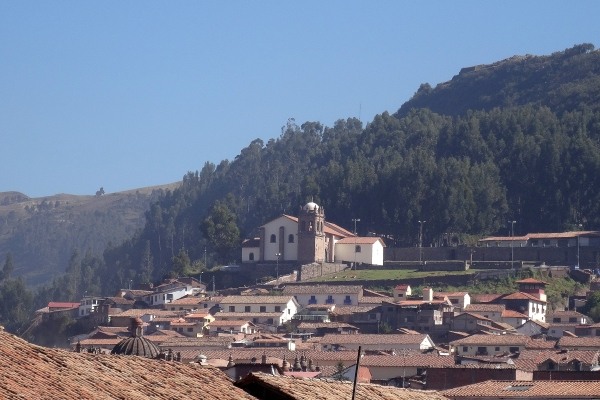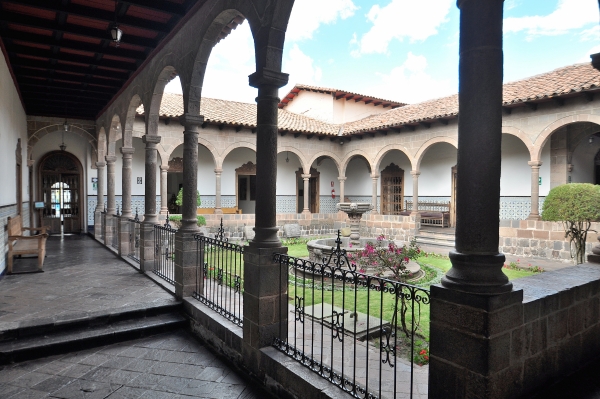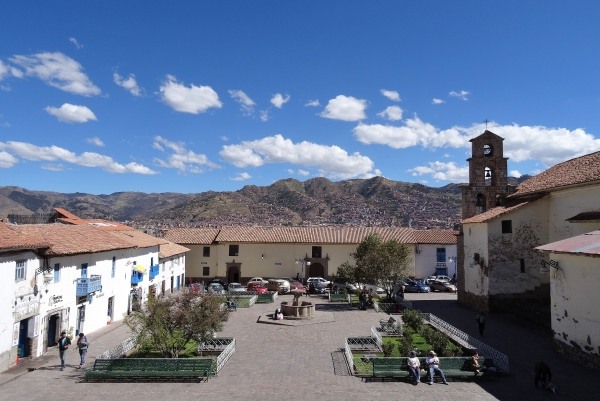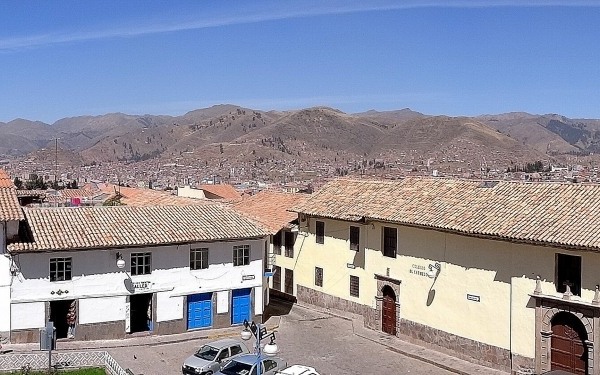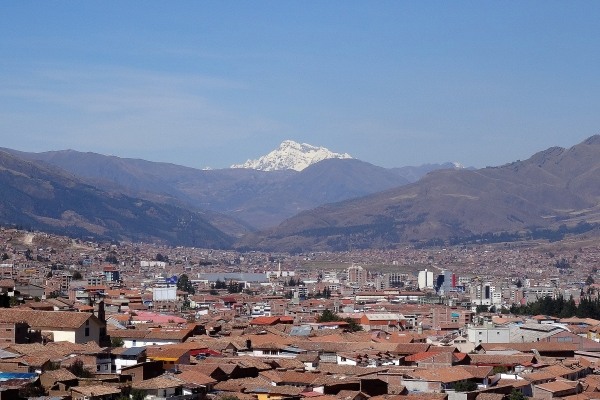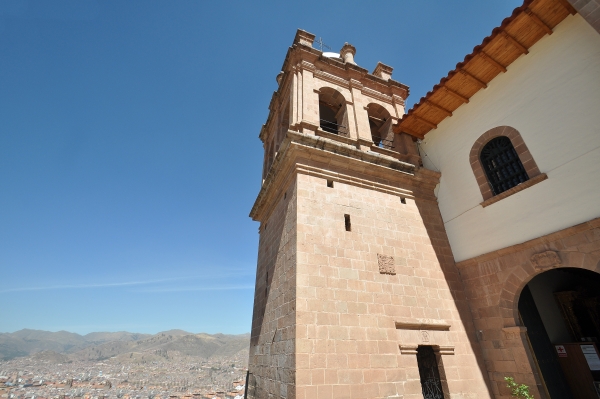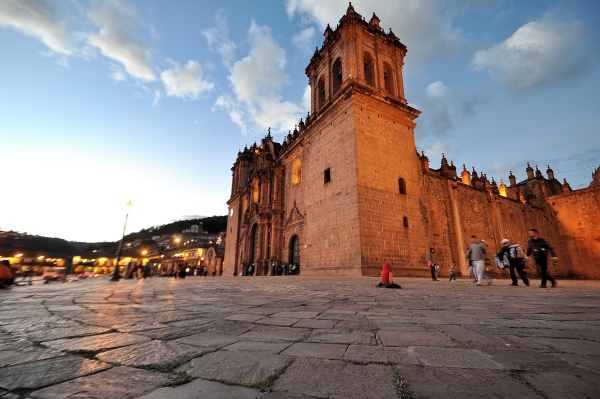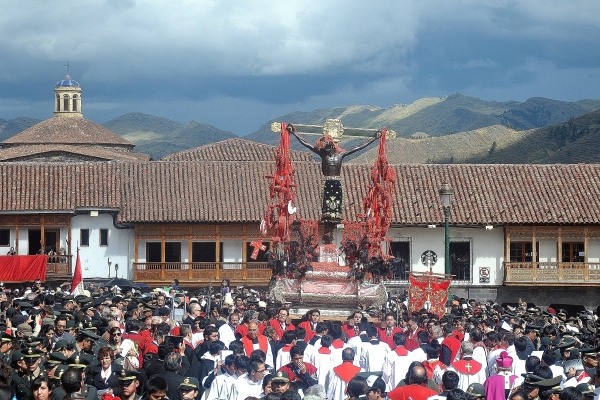Getting the most from your Cusco “Religious Ticket,” More than a load of old churches
June 24, 2014For many people there is only one thing worse than visiting an old church while on holiday, and that’s visiting lots of old churches. So why on earth would you buy the “boleto religioso”, a ticket that entitles you visit not one, but three churches – including Cusco’s cathedral – with a museum of religious art thrown in for good measure?
Well, firstly there’s a practical reason – you can visit all four attractions in less than a day, meaning there is no need to worry about not getting full value out of your ticket. Secondly, you can make big savings on entrance fees compared to what you would pay if you visited each sight individually. Thirdly, walking between the four attractions is a good way of seeing parts of Cusco’s historic centre that you may not otherwise see. And last but not least this tour gives you a bite-sized insight into the history of Catholicism in Peru, its coexistence with indigenous religion, and some wonderful examples of religious and Cusquena art.
The boleto religioso or religious ticket buys your entrance into The Museum of Religious Art, The Church of San Blas, The Church of San Cristobal and the Cathedral. The adult price is 30 Soles (about £6.50 or US$10.50) and there are reductions for children and students. For comparison, the entrance fee for the Cathedral alone is 25 Soles. You can buy your ticket at any of the four attractions but a word of warning: for some reason, at the Church of San Blas they advertise the full price as 50 Soles. However, without having to ask we were given a discount and only paid 25 Soles each.
At any of the sites you can usually hire a guide and if you do, there is no fixed rate so make sure you agree a price up front to avoid embarrassing discussions later. But for those of you who don’t want to splash out, here is our very own guide to what you can find at each of the attractions.
The Museum of Religious Art
The Museum of Religious Art is located close to the Plaza de Armas on Hatunrumiyoc, a pedestrian street that is also home to the famous 12-cornered Inca stone. I would suggest starting here for two reasons. One: there is no confusion over the ticket price and two: unless you are a very well informed art historian, it is probably the least impressive of the four sites on the tour, so best to get it out of the way and save the best for later.
The museum is housed in the former palace of the Archbishop of Cusco, and truth be told, the building will probably appeal much more to your average visitor than the religious art that it houses – but more about that later. The palace has many typically Spanish arabesque features including a shady cloistered patio complete with central fountain, and walls covered in blue and white azulejo tiles. There are also beautiful examples of carved wooden Mudejar-style ceilings. You could easily be in an Andalusian mansion in Seville or Granada.
Amongst the exhibits in the lofty rooms that surround the patio you will, apparently, find many important paintings from the Cusquena school with their typically elaborate gilt frames, including myriad Virgins, and a fascinating series of “Zodiac” paintings by renowned Cusco artist Diego Quispe Tito.
Now it’s a good job I am telling you all this because although the paintings are undoubtedly important works with exquisite detail and historical significance, you kind of have to use your imagination and make it up for yourself as you go along: Nothing is labelled – although random paintings appear to have some kind of audio guide number which has been obscured with tape –there are no leaflets or printed guides and when we were there not a human guide could be found. The ticket checker very kindly told me, in Spanish what was in each room, but after the seventh or eighth virgin I have to admit that I lost track. One thing I have learnt is that it was traditional for artists of the Cusquena School not to sign their paintings, which, in a gallery where nothing is labelled only adds to the confusion.
Anyway, it’s a pretty place and unsurprisingly it can be very quiet spot, and hey, it’s on the ticket so you might as well go in and while away a half hour. Just gen up a bit on Cusco religious art before you go in.
The Church of San Blas
The San Blas quarter of Cusco is one of the most atmospheric areas of town, and aimlessly wandering its narrow cobbled streets lined with pretty whitewashed colonial houses on a sunny day is a joy in itself. But with your religious ticket you get to visit the church of San Blas too. And this one really is worth the effort.
To get there just turn right when you exit the Museum of Religious art, walk past the 12-cornered stone, cross Calle Choquechaka and climb Cuesta San Blas until you arrive at the Plaza San Blas. The church will be facing you.
Come on a Saturday morning and you can browse the stalls of the San Blas Artesans’ market that fill the square before you go into the church. On any other day it’s worth popping into the Hilario Mendivil studio and “gallery” on the square to admire the trademark long-necked sculptures of the local Mendivil dynasty. Entrance is free but a donation is expected and you are very much encouraged to buy your souvenirs here.
Inside the 16th century adobe church, which was built on the site of an Inca palace, the main draw is the intricately carved 500 year-old cedar wood pulpit. This astonishing work is thought to have taken local sculptor Juan Tomas Tuyru Tupac some ten years to carve. It consists of over 1,200 individual pieces and includes wonderful details such as seven monsters representing the deadly sins, and the base is supported by figures representing eight leading protestants including Calvin and Luther.
Legend has it that Tuyru Tupac promised to carve the pulpit free of charge in return for being cured of leprosy. Duly cured, he changed his mind and after submitting his invoice he fell from the top of the pulpit, smashed his skull and died. And if you look carefully you can see what is alleged to be his skull, complete with fatal fracture, perched on top of the pulpit.
Amongst the myriad religious paintings, another point of note is the beautifully painted ceiling near to the main doors, the last surviving remnants of original ceiling and wall paintings that have been progressively destroyed by earthquakes over the centuries.
Before leaving, be sure to climb the clock tower for spectacular views of Cusco and the surrounding countryside, including the church of San Cristobal perched on a facing hill, which is the next church on this tour.

The Church of San Cristobal
There are various ways to get to the church of San Cristobal from San Blas, all of which will take you up and down some pretty cobbled streets so charge your camera, get yourself a tourist map and take your pick of the routes. One thing is for sure though – it’s ultimately an uphill climb so take your time, especially if you have only recently arrived. One of the more interesting and scenic routes is via Plaza Nazarenas. Here, if you have time you can visit the excellent Museum of Pre-Columbian Art, or if you are seriously into churches, you could try to persuade the doormen at the Belmond (the new name for Orient-Express) Hotel Monasterio to let you see the hotel’s beautiful private chapel.
ENTERTAINMENT TIP: If looking for fun at night, or to watch sports during the day, or even a taste of home, visit the Wild Rover Hostel Cusco for great food, sports and beer! Entrance to their bar is free even for non-guests
Now even if churches and religious art are not really your thing, the setting of San Cristobal justifies the climb. The broad plaza to the side of the church provides a magnificent viewpoint over Cusco and on a clear day you can see as far as snow-covered Ausangate, the region’s highest mountain.
Inside the church there is more fine Cusquena religious art as well as some brilliant examples of how the colonising Catholics tricked the indigenous population into believing in their mysticism: Mirrors, hitherto unknown to Peruvians and therefore verging on the magical, adorn the walls. In one of the side chapels a statue of Christ not only bears the trademark graphic lacerations of Peruvian Christ figures, but also jointed arms and neck. The jointed arms serve a practical purpose. Normally outstretched on the crucifix, the shoulder hinges allow the arms to be lowered to the side of the body so it can be paraded inside a glass coffin on high days and holidays. However the jointed neck had rather more sinister motivations. Someone would hide behind the crucifix and at suitable moments in the church service would move the Christ’s head up and down to somehow prove the statue’s sanctity to the awestruck converts. I’m sure it was very convincing.
San Cristobal’s ancient heritage can be seen beneath the church in a side room near the entrance – original stones from when, ironically, the site was a barracks for Inca warriors. And on the main altar are carved Pachamamas, the Inca mother earth goddess, full and naked breasts displayed with impunity as paintings and statues of the pious look on – evidence of the incongruous but relatively easy coexistence between colonial Catholicism and the indigenous religions. As our young, urbane guide explained to us,
“Yes, I can believe in Jesus Christ but I will never stop believing in the Pachamama…”
Back outside you can climb the stone bell-tower to take in more of the breath-taking views. And on a practical note there are also toilets here so you can take a convenience break if you so desire.
And so to the Cathedral
Descend from San Cristobal by the steps nearest the bell tower and take the steep cobbled street opposite to get back to the Plaza de Armas. Just to be clear, the cathedral is the big church at the top of the steps on the left hand side as you enter the square, not the equally splendid edifice that you see facing you, which is the Jesuit Church, entry into which is not included on your ticket.
Cusco’s cathedral is actually three separate churches joined together and which were once again constructed on a sacred Inca site. Now every guide book known to man has pages dedicated to this magnificent building, so I won’t waste space going over the same ground that you will probably have already read in Frommer, Rough Guide or Lonely Planet. What’s more, unlike the Museum of Religious Art, all the major exhibits here are clearly labelled in both English and Spanish.
However, I will share my favourites and some of the more quirky bits with you. And just to make it a bit more fun, should you find yourself a little church-weary or have flagging kids in tow, why not turn it into a game of Cathedral Bingo to liven things up a bit? Just tick each item off as you see it.
So, in no particular order, my cathedral favourites are: the portrait of the former archbishop bearing an uncanny resemblance to George Burns; the shiny gold statue of John the Baptist in 1970s disco-dancing pose; the crucifix bearing el Senor de los Temblores (the patron of Cusco) which, when paraded out of the cathedral on March 31st 1650 put an end to the earth’s quaking after no less than 400 tremors in one day; the large painting commemorating the same earthquakes, showing burning buildings, cracked and crumbling houses and the good citizens of Cusco gathered in the Plaza de Armas; the wooden statue of a virgin martyr carrying what looks like a large pair of pliers or a monkey wrench; the statue of a male martyr carrying his own head in his arms; and finally the important but slightly unorthodox painting of the Last Supper showing Jesus and the disciples about to devour not a paschal lamb but a rather scrawny looking chinchilla. Happy hunting.
Even if you don’t purchase the boleto religioso, it would be a shame not to visit the cathedral and if you don’t fancy the single 25 Soles fee, entry is free when mass is being said. You will have to convince the guards that you are there for the service and are not just any old tourist – perhaps learning a few prayers in Spanish would help. There are several early masses each morning from 6.30am Monday to Saturday and from 6am on Sundays.
Here endeth the tour.
Opening Times
Museum of Religious Art: Daily, 8am – 6pm
Church of San Blas: Daily, 8am – 6pm
Church of San Cristobal: Daily, 9am – 5pm
Cathedral: Daily, 10am – 6pm
YOU MAY LIKE

Lima to Machu Picchu – Agencies DON’T want you to read this!

#1 Rated Day Trips From Lima To Unforgettable Destinations

Everything You Need to Know to Avoid the Typical Tourist Mistakes At Machu Picchu

What NOT To Do When Visiting Rainbow Mountain

Spend 50% less and see 100% more in Peru

Machu Picchu Tickets – All You Need To Know!

These Hidden Destinations Just Outside Of Lima Will Blow Your Mind!

Peru – How to Avoid Being a Typical Tourist

OFFICIAL: This Company Was Voted The Best Way To Get Around Peru

Peruvian Travel Secrets That Only The Locals Know


